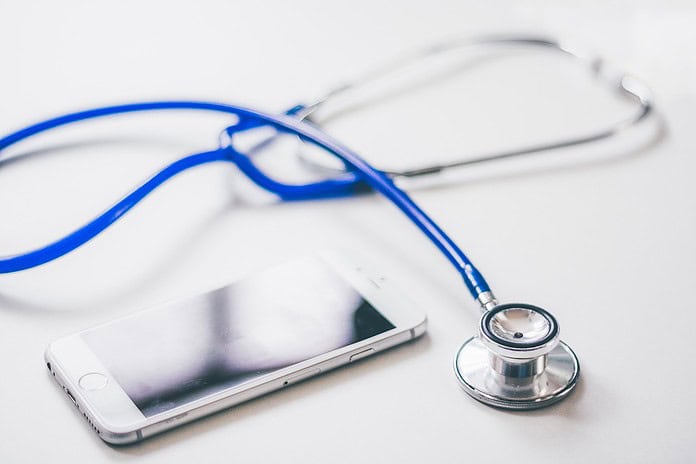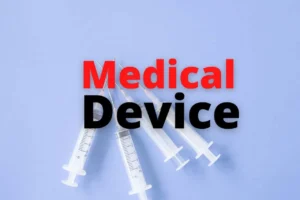Last Updated on October 18, 2024 by The Health Master
Stethoscopes
In the realm of medical science, a groundbreaking discovery has emerged, potentially reshaping the way we monitor our health by replacing stethoscopes by AI laser camera.
A team of researchers at Glasgow University has unveiled an AI-powered laser camera capable of remotely reading a person’s heartbeat and identifying symptoms of cardiovascular illnesses.
This innovation has sparked discussions about the possibility of replacing traditional stethoscopes with this futuristic technology.
Replacing Stethoscopes

Stethoscopes, a fundamental tool in healthcare since the 19th century, are currently used by physicians for heart rate monitoring. However, their limitations have become apparent over time.
Developed by French surgeon René Laënnec to maintain a level of professionalism during examinations, stethoscopes require proper training for accurate usage.
Misuse, such as pressing too hard on a patient’s chest, can dampen heartbeat signals, making it challenging to detect background murmurs and crucial signs of defects.
The Glasgow University Research
Addressing these limitations, researchers at Glasgow University have introduced a cutting-edge system that utilizes high-speed cameras capable of capturing images at an astonishing rate of 2,000 frames per second.
This AI-powered laser camera directs a laser beam onto the skin of an individual’s throat, using reflections to precisely gauge the minute movements of their skin as the main artery expands and contracts due to the force of blood flow.
The system’s accuracy in detecting even the subtlest changes, measured in billionths of a meter, sets it apart from traditional methods.
Potential Applications
The implications of this technology extend beyond conventional medical settings.
Professor Daniele Faccio of Glasgow University envisions the deployment of these laser heart monitors in shopping malls, where individuals can conveniently obtain quick heartbeat readings.
These readings could then be seamlessly integrated into their online medical records, providing a comprehensive overview of their cardiovascular health.
Alternatively, laser heart monitors could find a place in households, forming a part of systems monitoring various health parameters in a domestic setting.
Additional Devices and Health Parameters
Expanding the scope of health monitoring, the system developed by Faccio and his team opens avenues for detecting abnormalities beyond heartbeats.
Monitors designed to identify irregularities in blood pressure or subtle alterations in gait could serve as early indicators of conditions such as Alzheimer’s disease.
Significance of Remote Heartbeat Monitoring
The ability to remotely monitor an individual’s heartbeat is hailed for its potential to offer valuable insights.
Early detection of irregularities, such as murmurs or excessively fast or slow heartbeats, could provide vital warnings about the risk of strokes or cardiac arrests.
The convenience and accessibility of remote monitoring could revolutionize the way individuals engage with their cardiovascular health.
Comparison with Stethoscopes
Highlighting the advantages of the AI laser camera over traditional stethoscopes, Professor Faccio emphasizes the simplicity and effectiveness of the new technology.
While stethoscopes demand proper training, the laser camera provides accurate readings without the risk of signal dampening or difficulties in detecting background murmurs.
This comparison underscores the potential of the laser camera to become a mainstream tool for healthcare professionals.
Technology Behind the Laser Camera
Delving into the technology behind this innovative system, the use of high-speed cameras and laser beams showcases the sophistication of the approach.
With the ability to capture images at an incredible rate, the system ensures precise measurements, capturing the dynamic movements of the skin with unparalleled accuracy.
How the System Works
The laser beam directed onto the skin reflects back, enabling the system to gauge the minute movements of the skin as the main artery undergoes expansions and contractions due to the force of blood flow.
The system’s capability to detect changes at the scale of billionths of a meter illustrates the level of detail and accuracy achieved, offering a glimpse into the future of non-invasive health monitoring.
Future Implications
As this technology advances, its transformative impact on health monitoring becomes increasingly apparent.
he potential for early warnings and preventive healthcare measures could redefine how individuals approach their well-being.
The integration of such innovations into everyday life holds promise for a proactive and personalized approach to healthcare.
Comparison with Traditional Methods
Considering the advantages of the laser camera over traditional methods, including ease of use and accessibility, it becomes evident that this technology addresses longstanding challenges in healthcare.
The potential to deploy these devices in various settings further emphasizes their versatility and applicability in diverse healthcare scenarios.
Expert Opinions
Professor Daniele Faccio’s insights provide a valuable perspective, but the opinions of other experts in the field add depth to the discourse.
Understanding how professionals across the medical community perceive and embrace this technology contributes to a comprehensive view of its potential impact.
Public Reception
Anticipating public reactions to such transformative innovations is crucial.
While excitement about the possibilities exists, addressing potential concerns and ethical considerations ensures a balanced perspective.
Engaging the public in the conversation is key to fostering trust and understanding.
FAQs
Q: How does the AI laser camera differ from traditional stethoscopes?
A: Unlike traditional stethoscopes, the AI laser camera requires no special training, provides more accurate readings, and eliminates the risk of signal dampening.
Q: Can the laser camera detect all types of cardiovascular issues?
A: The laser camera is designed to detect irregularities such as murmurs, excessively fast or slow heartbeats, providing early warnings of potential cardiovascular risks.
Q: What are the potential drawbacks or limitations of this technology?
A: While the technology shows immense promise, potential drawbacks may include initial costs and concerns about privacy in remote health monitoring.
Q: How affordable and accessible is this technology for the general public?
A: Affordability and accessibility will depend on the widespread adoption and advancements in the technology, with potential considerations for broader healthcare initiatives.
Q: Are there any privacy concerns associated with remote health monitoring?
A: Privacy concerns may arise, and addressing them will be crucial for widespread acceptance. Striking a balance between technological advancements and privacy safeguards is essential.
Disclaimer: This article contains information derived from the source mentioned below. Our team utilized an AI language model to rewrite and present the news or article in a unique format.
Drug used for arthritis can help control Baldness: Study
Biometric cards for Pharmacists for efficient drug dispensing
WHO Guideline: To tackle acute malnutrition in children under 5
Antibiotic Resistance Crisis in India and Role of Government
For informative videos by The Health Master, click on the below YouTube icon:
For informative videos on Medical Store / Pharmacy, click on the below YouTube icon:
For informative videos on the news regarding Pharma / Medical Devices / Cosmetics / Homoeopathy etc., click on the below YouTube icon:
For informative videos on consumer awareness, click on the below YouTube icon:












